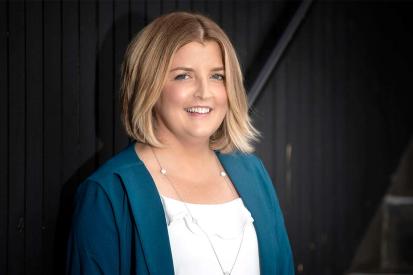Why Web Design Is Art and a Freedom of Expression

Editor's note: The following piece was written by Kara Jensen, who joined an amicus brief in 303 Creative v. Elenis explaining the artistic process behind website and graphic design and supporting the freedom of designers to create consistent with their values.

Web design might not be the first thing that comes to mind when you think of art. But as a web designer, I can say the process of creating a custom-designed website is both artistic and expressive. It requires creativity, developed skill, an eye for detail, and unique talents that speak into and craft an intended message.
What I create and what my fellow designers produce is art. We work hard at our craft, and our creativity and freedom of expression fuel our projects. We communicate messages on digital canvasses and create custom designs to express ideas and values.
Unfortunately, the government doesn't always respect our rights as artists to create freely. In Colorado, a state law would force graphic artist Lorie Smith to express messages that violate her most deeply held beliefs. Lorie challenged that law, and her case has gone all the way to the Supreme Court. In December, the Court heard Lorie's case. Although I disagree with her views about marriage, I support her case completely and hope she wins. Why, you might ask? Free speech and our artistic freedom are on the line. And a win for Lorie would be a win for me—for all of us.
I’m invested in the outcome of Lorie’s case because—like her—I am a web designer and run my own studio.
I've been a web designer for 20 years and am currently the CEO and Creative Principal at Bop Design. We are a San Diego-based, women-owned website design firm that works with B2B companies worldwide. The custom websites we create for our clients tell a unique story about a company's values and mission.
In today's digital age, a website's first aesthetic impression is a decisive factor in whether the viewer engages with the story and keeps scrolling or clicks away. Whether you actively or subconsciously realize it, a website's text, colors, imagery, and formatting all contribute to the message being communicated. As a web designer, every word, graphic, font, image, and color I utilize is intentional and used to construct and express a particular message.
And "speech" is not simply expressed through text and copy alone on a website. An experienced web and graphic designer knows that the layout, visual elements, typography, colors, and arrangement of any given design help construct the intended message.
At Bop Design, before we even begin work, we meet with prospective clients to get to know their business and determine if we are the right team to express their vision for their company. If we are not passionate or aligned with their vision, it's not only a detriment to the client, but something Bop Design shouldn't be forced to express.
For example, if a big tobacco company came to us to create a website, we would turn it down because we aren't supporters of their mission. If a clean energy company came to us, it would be a project we want to take on because it's a mission we support.
The creative and storytelling process inherent in these custom website designs underscores that uniquely created graphic designs are speech.
And we shape this speech using a unique mix of specific fonts, textures, symbols, color palettes, and more to communicate ideas onto a blank, digital canvas. Thus, the designer and the message are inextricably connected. There's no simple plug-and-play/drag-and-drop formula for these custom designs. We take the client's vision and create a unique story that expresses and promotes their cause.
This is the freedom of expression a designer has in order to create original websites from their skill and creativity. It's an artistic process.
And I find great joy in using my artistic freedom to bring those ideas to life on a website. I love advancing clients' businesses and missions by articulating a vision through our unique designs.
Part of my joy comes from the freedom of being able to choose which messages I do and do not want to speak. My artwork is personal and unique to me. And I should have the freedom to pour my artistic talents into causes and companies I support. I should not be mandated to speak about things I disagree with. My desire to create art is part of who I am, and if I disagree with the message I'm speaking or the art I'm creating, it violates my core convictions.
That’s why I stand with Lorie, even though I disagree with her views, including on the topic of marriage. If the government can compel me, Lorie, or any other artist to use our talents to speak a message we disagree with, they can force anyone to speak any message the government prefers.
The inalienable rights to freedom of speech and freedom of expression do not end when I decide to use my artistic web design talents to make a living. Uniquely made graphic and web design is speech. And that speech deserves protection.
